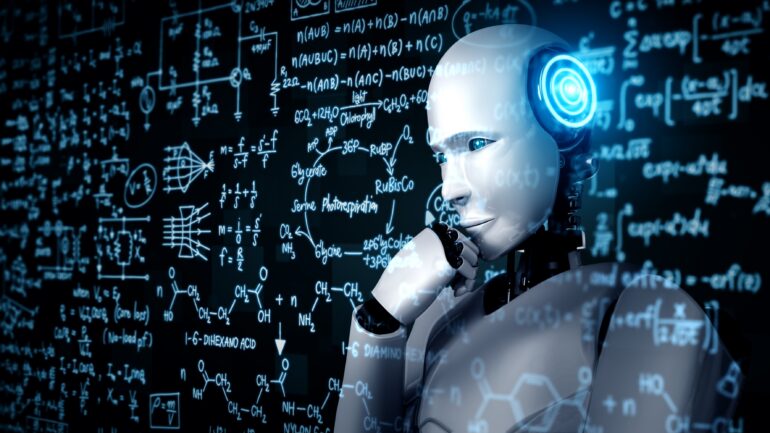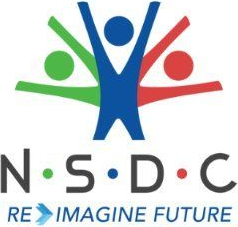Can AI Crack Mathematics’ Greatest Unsolved Puzzles? DARPA Bets on a Digital Revolution

What if AI could crack math’s toughest mysteries faster than any genius alive?
DARPA’s new project pairs human intuition with machine intelligence to revolutionize discovery. Is the next Einstein about to be a computer? Find out how math—and the world—could change forever!
Ever tried racing a car on the highway and imagined that the world outside will pause like in a video game? Young Einstein wondered: “Could I race alongside a beam of light? If I catch it, would the light freeze?” Centuries ago, Galileo imagined being locked in a ship’s cabin with no windows. If the ship sailed perfectly smoothly, could you tell it was in motion? Artificial Intelligence (AI) still can’t even dream of these ‘what-if’ scenarios like Galileo or Albert Einstein. AI can be great a playing chess, but it still cannot invent the game!
You can almost smell the stale coffee and chalk dust as a lone mathematician scribbles equations that sprawl like vines—some problems take years to untangle, others have resisted solutions for centuries. This is how mathematical discovery has worked since the days of Archimedes. What if, the mathematician had a digital partner? But now, DARPA, (the same group that helped invent the Internet) the Pentagon’s famed innovation lab, wants to rewrite the playbook. Their new initiative, expMath, aims to pair human genius with AI as a team that could speed up breakthroughs in fields from cryptography to climate modeling.
At its core, mathematics is the scaffolding behind our weather apps or our banking encryption . It secures our online transactions, predicts weather patterns, and even guides spacecraft. But the way we discover new maths is still old school—a slow, painstaking process of intuition and rigor. Frankly, it’s time someone speed up things. DARPA’s idea is to change that by developing an AI coauthor, a tool that doesn’t just compute but reasons, breaking monstrous problems into digestible pieces.
The challenge, however, is steep. Today’s most advanced AI models, like Google’s AlphaProof, excel at structured mathematical puzzles—the kinds posed in high school Olympiads, where problems follow familiar rhythms. But genuine research is wilderness exploration. Take the Riemann Hypothesis, a conjecture about prime numbers that has defied proof for 165 years. Solving it isn’t a matter of applying known tricks; it’s like navigating a labyrinth with no map. AI struggles here not because it lacks intelligence, but because these problems demand creative leaps—something closer to artistry than calculation.
DARPA’s expMath initiative aims to revolutionize mathematical discovery by pairing human creativity with advanced AI, potentially accelerating breakthroughs in fields like cryptography, climate modeling, and beyond.
While current AI excels at structured, well-defined problems, true mathematical innovation still demands creative leaps and intuition—qualities that machines are only beginning to approximate.
Even if AI can’t yet have “Eureka” moments, its ability to rapidly process, prune, and propose ideas could transform math from a solitary pursuit into a dynamic collaboration, reshaping how humanity tackles its hardest problems.
One major obstacle is sheer scale. A proof for a problem like Riemann might require millions of logical steps, far beyond human comprehension. Imagine trying to cross a continent by taking single grains of sand as steps. AI researchers are tackling this by teaching models to bundle reasoning into “supermoves”—compressing thousands of inferences into streamlined jumps. On March 14th, 2025—Pi Day, fittingly—a Caltech team used this approach to debunk a 60-year-old conjecture, saving mathematicians what could have been decades of fruitless grunt work. It’s like swapping your old bicycle for a Tesla: the destination remains the same, but the journey transforms entirely.
Yet the most tantalizing question isn’t just whether AI can assist in math—it’s whether a machine have a Eureka moment? Real discovery often come from flashes of insight, like a sculptor seeing the statue hidden in marble. Tools like AlphaEvolve, which iteratively generates and refines hypotheses, offer glimpses of this potential. They act like tireless brainstorming partners, proposing angles a human might overlook. But true invention—the kind that gave us calculus or quantum theory—still eludes machines. AI can play chess like a god, but can it invent the game?
The stakes are high. Success could mean unshackling progress in physics, medicine, and AI itself. Imagine simulating drug interactions at unprecedented speeds, or cracking optimization problems that currently bottleneck industries. But even partial victories would redefine collaboration between human and machine, turning solitary toil into dynamic dialogue.
For now, AI in mathematics remains a powerful but imperfect ally—a compass rather than a pathfinder. It excels at pruning dead ends and illuminating trails, but the final ascent still belongs to the human mind. DARPA’s experiment may not birth an Einstein-level AI just yet, but it could forge something equally valuable: a new way of thinking, where silicon and synapse work in concert to push knowledge into uncharted realms.
The age of chalkdust and midnight oil isn’t over. But soon, those chalkboards might have a second set of hands—digital ones—writing alongside us.


